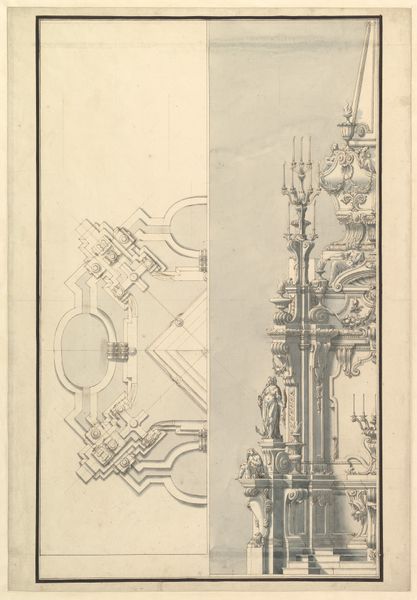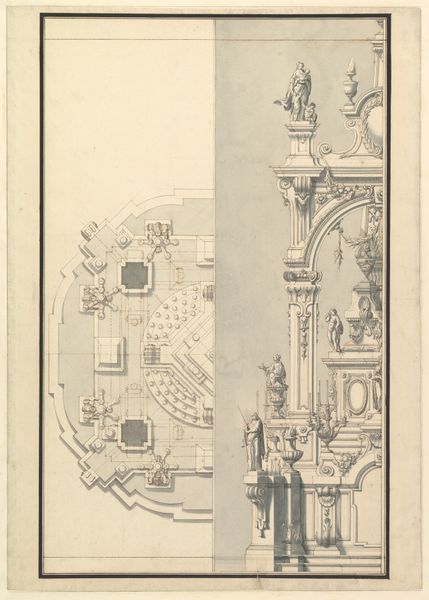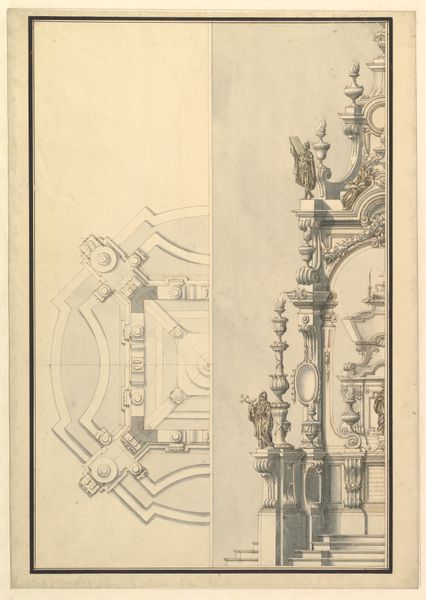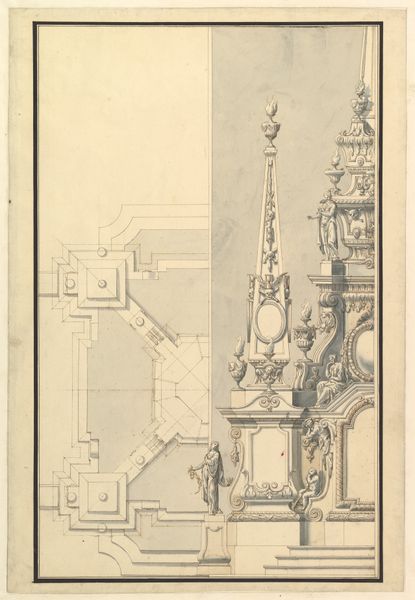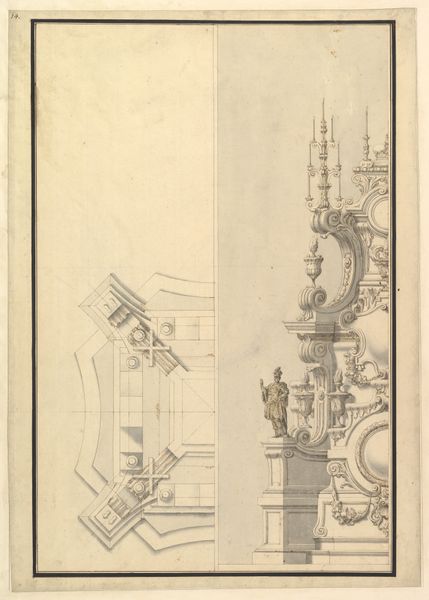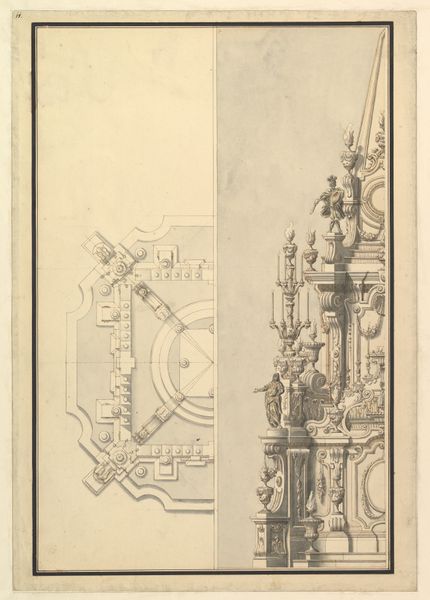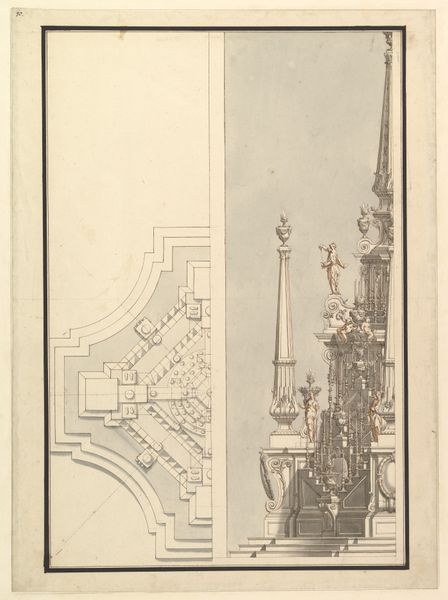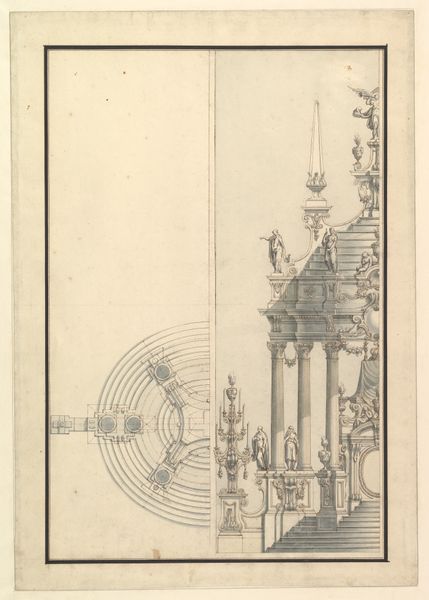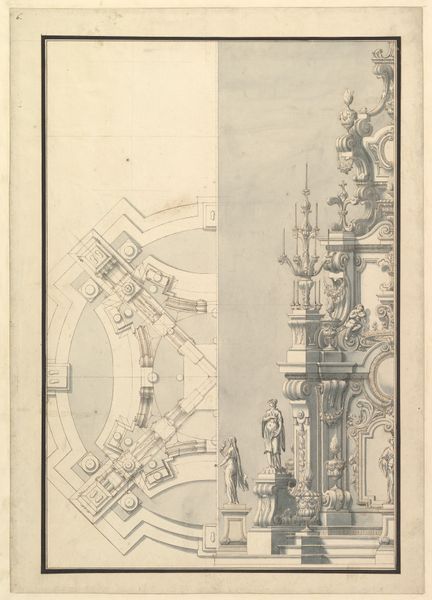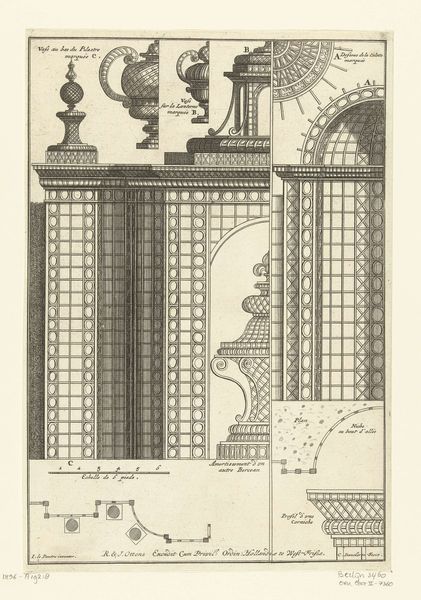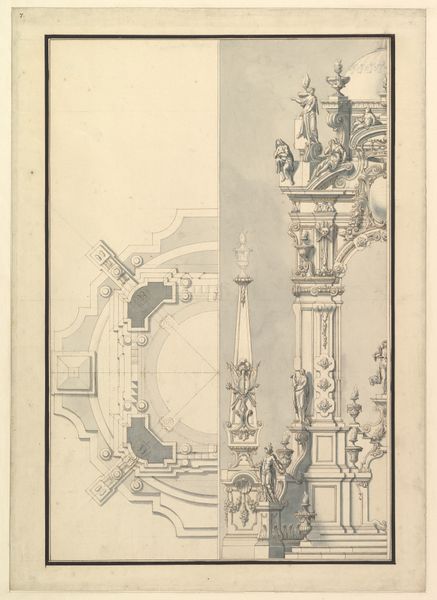
Half Elevation and Half Plan for a Catafalque for Maximilian, Elector of Bavaria, probably Maximilian II Emanuel (1662-1726) 1696 - 1756
0:00
0:00
drawing, print
#
drawing
#
aged paper
#
pen drawing
#
mechanical pen drawing
# print
#
pen illustration
#
pen sketch
#
old engraving style
#
personal sketchbook
#
pen-ink sketch
#
men
#
pen work
#
storyboard and sketchbook work
Dimensions: 18-7/8 x 13 in. (47.9 x 33.0 cm)
Copyright: Public Domain
Editor: So, this drawing, "Half Elevation and Half Plan for a Catafalque for Maximilian, Elector of Bavaria," is attributed to Giuseppe Galli Bibiena, likely made between 1696 and 1756. It’s a pen drawing, a very detailed architectural rendering. The contrast between the clean lines of the plan on the left and the ornate elevation on the right is striking. It almost feels like looking at two different realities. What historical context is important for understanding this work? Curator: This drawing speaks volumes about the spectacle and political theater surrounding death in the Baroque period. Catafalques were temporary structures, often incredibly elaborate, erected to honor the deceased, usually royalty or high-ranking nobility. They were as much about conveying power and dynastic continuity as they were about mourning. Editor: So, the complexity is deliberate, meant to showcase something. Curator: Exactly. The Bibiena family, known for their theatrical designs, essentially treated these occasions as stage productions. Think about it: a ruler dies, and instead of a somber, understated service, you have a monumental structure erected, filled with symbolism, sculpture, and carefully orchestrated lighting. What kind of message do you think that sends to the public? Editor: It suggests permanence and grandeur, even in death. A show of power for the dynasty. Were these types of displays common? Curator: Absolutely. They were powerful tools of propaganda, visually reinforcing the legitimacy and divine right of the ruling family. This drawing gives us insight into the meticulous planning and artistic skill involved in crafting these ephemeral displays of power. Notice the interplay between architectural precision and theatrical flourish, it speaks to how art served specific political functions at the time. Editor: I never thought about funerals as political statements, but it makes so much sense when you see the sheer scale and detail here. It makes me reconsider the role of public art in shaping perceptions of power. Curator: Precisely! It’s a potent reminder that art is rarely created in a vacuum; it often serves the needs and reflects the values of the society that produces it.
Comments
No comments
Be the first to comment and join the conversation on the ultimate creative platform.

